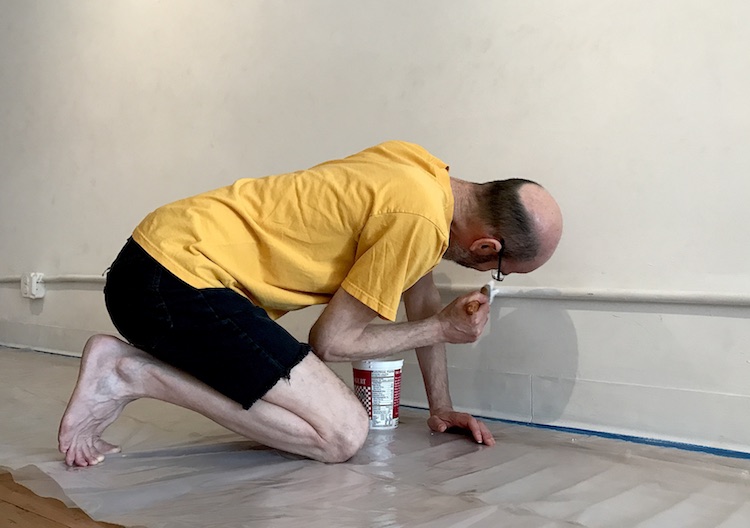Recently, I spent nearly three weeks at the Village Zendo's summer meditation retreat. While on retreat, my day started around 4:30am and ended around 10pm with lots of meditation, working on the cleaning crew and, when we were not in silence, intense group discussions. During one such discussion, a longtime practitioner commented on our demanding retreat schedule, saying "If it was easy, it wouldn't be worth it."
Working hard… or hardly working?
That comment made me think about how we look at effort and accomplishment in our culture. In my experience, people often place a high value on anything accomplished with great difficulty. Meanwhile, they tend to downplay whatever might have been done with ease. The clichés "No pain, no gain" and "Work hard, play hard" are operative for many people, and to me they express a competitive ethos that permeates our society. We compete for wealth, for social and professional advancement, for power, for spiritual insight, and for a host of other possessions or characteristics. The tougher the competition, the sweeter our "victory" becomes.
But the constant striving for "progress," for more and better, for the latest and greatest, can lead to exhaustion and dissatisfaction. An article in today's New York Times discusses this, noting that "We have simply accepted overextension as a way of life."
Back when I was a stock market analyst, I took a business trip to Los Angeles from New York. I woke up at 5:00 am, flew to LA, attended a meeting with prospective clients and then did some field research. Later that night, I took a red eye back home, hardly sleeping during the long flight. After showering and changing clothes at my apartment, I resumed working at my office and remained there until 3:00pm. After about 36 hours with virtually no sleep and plenty of stress, I tumbled reluctantly into bed. Strangely enough, I felt proud of myself and was thrilled at this vivid proof of my stamina. I never considered the high cost to my health and well being.
Nowadays that sort of careerist stunt would be completely beyond my endurance. More importantly, though, I've come to recognize that my supply of energy is finite and that my health – both physical and mental – should be zealously protected. Self abuse is out… self care is in. And in the Alexander Technique I have a healthy approach to life that helps me to practice self care in the midst of my ordinary daily activities.
Finding ease by thinking in activity
One example of the value of this approach came up recently when a group of volunteers converged on the Village Zendo to paint our meditation space. It had been a long time since I had painted a wall, and it was interesting to apply my Alexander thinking to this unfamiliar task.
We had a lot of painting to do in very little time, so the temptation to end gain (to hurry up with the painting and forget my own well being) was very strong. This end gaining expressed itself in my reluctance to take brief breaks to hydrate, use the rest room, or grab lunch. I knew breaks were necessary to maintain my well being and productivity, but getting myself to stop painting for even a short time was difficult. This behavior pattern was little changed from my days as a stock market analyst — even though those days had ended over a decade ago.

I had greater success in my struggle with end gaining when it came to the way I set about my work. My assignment was to use a brush to paint along an electrical pipe, and then to paint the baseboard. These were both quite low to the ground, so working without strain or injury required some thought and experimentation.
If at first you don't succeed, try something different
My first approach was to do what I saw some others doing, namely, to kneel down on the bare wooden floor and scrunch myself closer to whatever I was painting. This way of working enabled me to paint along the bottom of the wall, but pressing my bare knees against bare wood quickly took a serious toll on my joints.
I improvised a cushion for my knees by wrapping an old shirt around one of the Zendo's black cushions to keep the white paint away from the black fabric. This eased the pressure on my knees considerably, but working this way was still awkward and unsustainable for long periods of time. So another round of experimentation began.

Finally I tried sitting on a very low meditation bench, using the improvised cushion to make a comfortable seat. This turned out to be the most sustainable way to paint close to the floor. It allowed me to avoid scrunching my neck or back. I could also breathe easily (because my torso remained long and wide) and fully protect my knees.
The point of this discussion is to underscore the benefits of thinking about how we're working before, during and after the work happens. From the moment I arrived at the Zendo to paint, there was no doubt that I could pick up a brush and contribute to the effort. The real challenge was to remember to use Alexander thinking in this unfamiliar and time-pressured situation. I had to ask myself to pause, to examine my activity closely, and to experiment to find the best way of working without harming myself.
Painting the Zendo in a single day wasn't easy for any of the volunteers, but with a little awareness, inhibition and direction it became much less of a strain for me than it could have been. Thanks to the Alexander Technique, there was no pain, and a lot of gain. Why not try it for yourself?

Photos by Diana JiFu Lakis


Leave A Comment